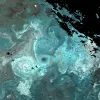
Scientists in Southampton, UK, and Ulm and Karlsruhe in Germany have shown that a variant form of a fluorescent protein (FP) originally isolated from a reef coral has excellent properties as a marker protein for super-resolution microscopy in live cells.
Their findings have been published online by Nature Methods and will appear in print in…

University of Southampton scientists based at the National Oceanography Centre, Southampton, along with US and Indonesian collaborators have uncovered clues as to why some undersea earthquakes generate huge tsunamis. Their findings may help explain why the 2004 Sumatra ‘Boxing Day Tsunami’ was so devastating.
Early in the morning of 26 December 2004…

The challenges facing the ocean environment in the 21st Century are the subject of a key conference later this year.
Preparations are under way for the 14th Biennial Challenger Conference for Marine Science, which takes place at the National Oceanography Centre in Southampton, from 6–9 September 2010.
The aim of the Challenger…

Even in the dark abyss of the deep ocean animal communities can undergo rapid, widespread and radical changes. Scientists at the National Oceanography Centre are at the forefront of monitoring these changes and understanding the mechanisms responsible. Their latest research is published in a special issue of the journal Deep Sea Research II.
…
Autosub3, a robot submarine operated by the National Oceanography Centre (NOC), has been instrumental in revealing reasons for steady thinning of a vast glacier in Western Antarctica over recent decades.
The new findings, which are important for understanding Antarctica’s potential…

Iron is recognised as a nutrient, the lack of which limits plankton growth in some parts of the ocean. By adding small quantities of iron to the surface of the ocean, plankton growth can be stimulated (‘the iron hypothesis’), potentially providing a means of extracting carbon dioxide from the atmosphere and sequestering it in the deep ocean for hundreds…

Computer simulations performed by researchers at the National Oceanography Centre and the University of Glasgow show how oceanic stirring and mixing influence the formation and dynamics of plankton patches in the upper ocean.
Tiny free-floating marine plants called phytoplankton live in vast numbers in the sunlit upper ocean. Through the process…

The 8th UK Sea Ice Group meeting will take place at National Oceanography Centre on Thursday 16 September and Friday 17 September 2010.
Recent climatic changes in the Arctic Ocean and an unprecedented rapid decline of Arctic sea ice cover, occurring during the last decade, are anticipated to impact regional and global climate, environment, marine…

A two-year project, which will provide vital information on the interaction between the ocean and the atmosphere and its influence on climate, begins this month.
Scientists at the National Oceanography Centre (NOC), University of Leeds, and the British Antarctic Survey (BAS) are collaborating on the ‘Waves, Aerosols and Gas Exchange Study’ (WAGES),…

Scientists onboard the RRS James Cook have found the world’s deepest hydrothermal vents 3.1 miles down (5,000 metres) in the Caribbean’s Cayman Trough.
The NOC scientists are writing a daily blog diary. Follow from the first day at…